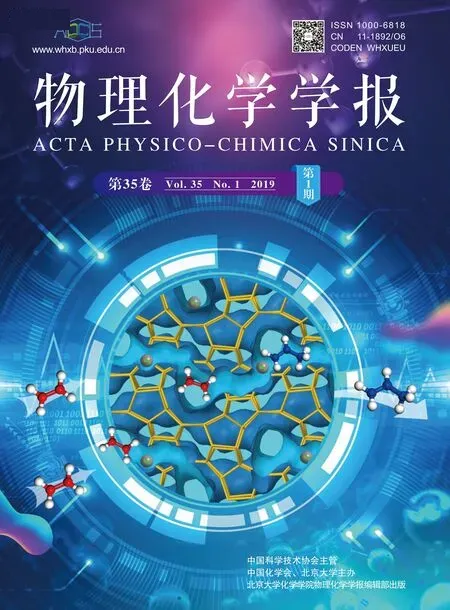pH and Light Reconfigured Complex Emulsions by Stimuli-Responsive Surfactants
WANG Zhe, JIA Kangle, LIU Tongqing, HU Junwen, LI Xuefeng, DONG Jinfeng
College of Chemistry and Molecules Sciences, Wuhan University, Wuhan 430072, P. R. China.
Abstract: Complex emulsions have attracted much attention because of their relevant application in various fields over the past decade. Though complex emulsions with various topologies can be created by adjusting the fraction of selected components during the homogenization processes, it is still a challenge to control the topology of complex emulsion droplets in situ using stimuli-responsive factors such as light, pH, and temperature. In this work, a three-phase complex emulsion of heptane and perfluorohexane (1∶1 volume ratio) in an aqueous solution of a fluorosurfactant, F(CF2)x(CH2CH2O)yH (Zonyl FS-300), and a synthesized pH and light dual-responsive surfactant, 1-[2-(4-decylphenylazo-phenoxy)-ethyl]-1-diethylenetriamine (C10AZOC2N3) (both serving as emulsifiers), was prepared using the temperature-induced phase separation method. The topology of the heptane-perfluorohexane-water (H/F/W) three-phase complex emulsion was highly dependent on the concentration of C10AZOC2N3. Light microscopy images showed that phase inversion from H/F/W to F/H/W type double emulsion via Janus emulsion was achieved by gradually increasing the concentration of C10AZOC2N3. It was noticed that interfacial tension between heptane and an aqueous solution containing 0.1% Zonyl FS-300 (mass fraction) decreased from 28.2 to 7.4 mN·m-1 when the concentration of C10AZOC2N3 was increased to 0.1%(mass fraction). The topology of the complex emulsion droplets is primarily determined by three interfacial tensions at the contact line∶ the H/W interface (γH), F/W interface (γF), and H/F interface (γHF). The reduction in interfacial tension between heptane and water was the major factor that controlled the topological transition of the complex emulsion. First, it decreases the contact angle between the H/W and H/F interfaces (θH). Second, it increases the contact angle between the F/W and H/F interfaces (θF) simultaneously. Surfactant C10AZOC2N3 is responsive to both pH and light, and therefore, it potentially endows the fabricated complex emulsion with the corresponding stimuli-responses. Experimental results confirmed that the morphologies of complex emulsions can be tuned reversibly between Janus emulsion and F/H/W type double emulsion either by pH variation or UV/blue light irradiation. Interfacial tension measurements between heptane and water show that either protonation variation or trans-cis isomerization of C10AZOC2N3 caused a decrease of about 5 mN·m-1 in interfacial tension, suggesting that the nature of pH- and light-induced morphological changes of complex emulsion droplets is the same as that induced by the changes in the concentration of C10AZOC2N3. Correspondingly, a mechanism for the stimuliresponsive morphological change of complex emulsion was proposed based on the reduction of interfacial tension between heptane and aqueous solution interface by changing the configuration of C10AZOC2N3 using pH alteration and light irradiation. This work provides a new approach for controlling the morphologies of complex emulsion droplets with an external double stimulus by simply introducing a dual-responsive surfactant.
Key Words: Complex emulsion; Janus droplet; pH-sensitive; Photo-response; Morphology control


